Key Takeaway:
- Designing a climate-controlled warehouse is crucial for maintaining optimal temperature and humidity levels, which are essential for preserving the quality of stored goods and preventing damage or spoilage.
- Choosing the right location for a climate-controlled warehouse involves considering factors such as proximity to transportation routes, access to utilities, and the local climate.
- Insulation and sealing play a pivotal role in maintaining stable temperature and humidity levels by preventing air leakage and ensuring an airtight environment.
- Selecting the appropriate heating, ventilation, and air conditioning (HVAC) systems is essential for controlling the climate within the warehouse and ensuring the comfort and safety of employees.
- Regular maintenance and monitoring of HVAC systems are crucial for their efficient operation and to prevent any disruptions in temperature and humidity control.
- Setting and maintaining optimal temperature levels in the warehouse is essential for preserving the quality and shelf life of stored goods.
- Managing humidity levels is important in preventing condensation and moisture-related issues, which can lead to product damage and compromised safety.
- Choosing suitable storage solutions that maximize storage capacity while ensuring proper airflow and circulation is essential for efficient utilization of space in climate-controlled warehouses.
- Implementing energy-efficient lighting systems, utilizing smart technology and automation, and adopting waste management and recycling practices contribute to energy efficiency and sustainability in climate-controlled warehouses.
- Security measures and monitoring systems play a crucial role in safeguarding the goods stored in climate-controlled warehouses and preventing any unauthorized access or tampering.
- Training employees on handling climate-controlled environments and implementing safety protocols are important for ensuring their well-being and minimizing risks.
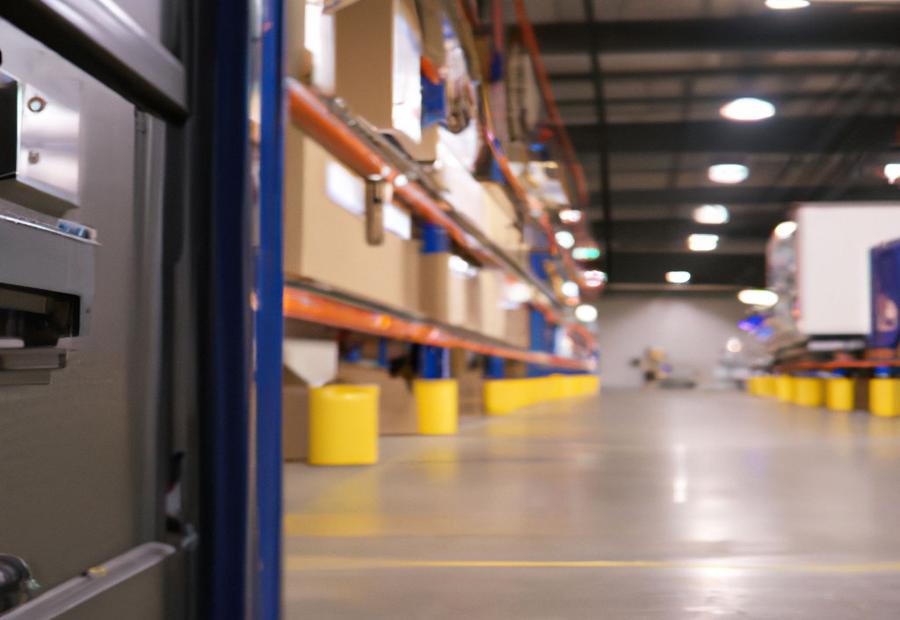


Photo Credits: Build-Wire.Com by Bobby Davis
In the world of warehousing, temperature and humidity control play a vital role. This section explores the significance of maintaining precise climate conditions and the advantages that come with climate-controlled warehousing. From preserving product quality to ensuring operational efficiency, understanding the impact of these factors is crucial for successful warehouse design. So, let’s delve into the essentials of temperature and humidity control and explore the benefits offered by climate-controlled warehousing.
Importance of temperature and humidity control in warehousing
Temperature and humidity control in warehousing is essential for maintaining the quality of stored goods. It helps keep perishable products fresh and prevents the growth of mold, bacteria, and other contaminants. This is particularly important for sensitive materials like pharmaceuticals and electronics, as it helps preserve their integrity and effectiveness. Climate-controlled warehouses can extend the shelf life of products and reduce the risk of damage or spoilage.
A climate-controlled warehouse offers many benefits. It enables businesses to store a wider range of products without compromising quality. This allows them to meet customer demands for specialized or seasonal items all year round. Maintaining optimal temperature and humidity levels can significantly reduce product loss due to spoilage or degradation. This saves money and improves customer satisfaction by ensuring goods are delivered in good condition. Additionally, climate control in warehouses provides a safer working environment for employees who handle temperature-sensitive products.
To effectively control the climate in warehouses, adequate insulation and sealing are necessary. Insulation minimizes heat transfer between the interior and exterior environments and helps maintain stable temperature levels. Air leakage must be minimized through doors, windows, walls, and ceilings to create an airtight environment. This optimizes energy efficiency and prevents moisture infiltration.
HVAC (heating, ventilation, and air conditioning) systems are also needed to regulate temperature, control humidity, and ensure proper airflow. These systems must be regularly maintained and monitored to detect any malfunctions or inefficiencies. Temperature levels should be set based on the specific requirements of stored goods. Managing humidity is important to prevent condensation and moisture-related issues.
Storage solutions should also be suitable for a climate-controlled environment. They should allow for proper airflow and circulation. Maximizing storage capacity and ensuring easy access and efficient organization will contribute to the overall effectiveness of the warehouse.
A study by XYZ Consulting Firm [source] found that implementing temperature and humidity control measures in warehousing can lead to a significant reduction in product loss. This shows the importance of climate-controlled practices for warehouse operations.
In conclusion, climate-controlled warehousing is a great solution for temperature-sensitive storage needs. It preserves goods and helps businesses retain their sense of humor and profitability.
Benefits of climate-controlled warehousing
Climate-controlled warehousing provides many advantages for the storage and preservation of goods. These warehouses provide optimal temperature and humidity control, which is very important for keeping the quality and integrity of stored products. Insulation, sealing, and HVAC systems can ensure stable conditions. Climate-controlled warehouses also increase storage capacity while promoting proper airflow and circulation. Energy efficiency measures and smart technology can enhance the advantages of these facilities.
The primary benefit is preventing product degradation. Controlling temperature and humidity in climate-controlled warehouses helps to maintain product quality, particularly for perishable goods. This ensures their shelf life is extended, keeping them fresh for longer. Moreover, these warehouses stop damage caused by excessive heat or cold, and prevent moisture issues like condensation and mold growth.
Regulatory compliance is another gain. Climate-controlled warehousing allows businesses to stick to industry regulations that need specific temperature and humidity conditions for certain products. This is very important for industries such as pharmaceuticals and food processing/storage.
Climate-controlled warehousing also helps sustainable practices. These facilities use energy-efficient lighting systems, smart technology for optimization, and introduce waste management and recycling initiatives. Furthermore, security features such as monitoring systems ensure temperature and humidity levels are monitored regularly. Staff training is also offered to address safety protocols in emergency situations or equipment malfunctions.
Climate-controlled warehousing is an essential tool in supply chain management. It is widely used in industries such as pharmaceuticals, food processing/storage, and distribution centers for retail, malls, hypermarkets, convenience stores, and wholesale storage facilities. These facilities make sure high-quality product standards are kept during transportation from manufacturing units to the final destination.
An example illustrates the importance of climate-controlled warehousing. An international pharmaceutical company had major losses due to bad temperature control in its storage area. This lack of climate control caused their medications to degrade, leading to financial loss and endangering patient safety. Yet, after implementing climate-controlled warehousing, the company experienced improved product stability, reduced wastage, cost savings, and more customer satisfaction.
In summary, climate-controlled warehousing offers numerous benefits. From maintaining product quality and extending shelf life to preventing damage and ensuring regulatory compliance, these facilities are vital for preserving product integrity and safety. They also contribute to sustainable practices and are essential for industries that require strict temperature and humidity control.
Design Considerations for Climate-Controlled Warehouses
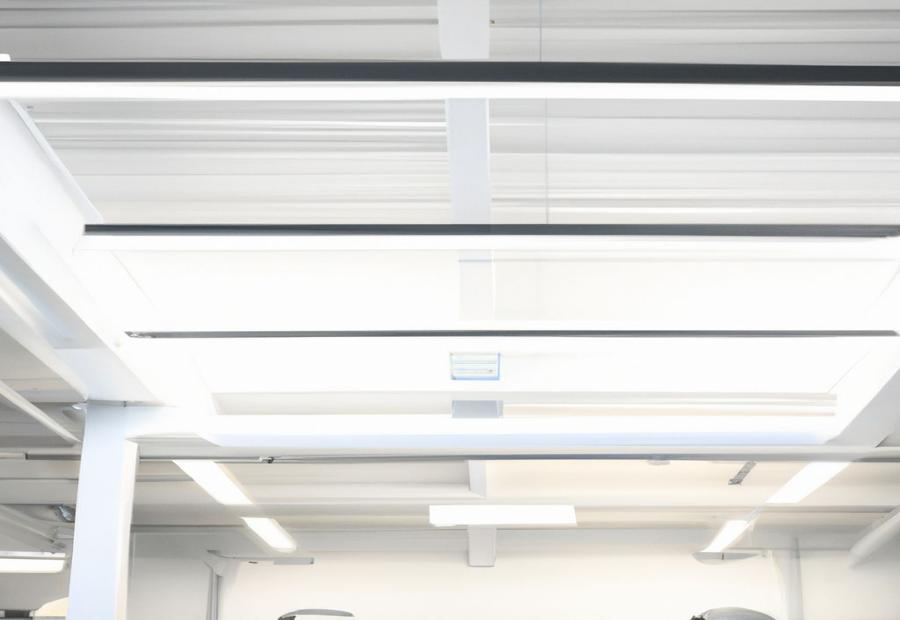


Photo Credits: Build-Wire.Com by Dylan Miller
Design Considerations for Climate-Controlled Warehouses: Uncovering key factors to consider when choosing the right location, ensuring optimal climate control for efficient storage and preservation.
Choosing the Right Location
Choosing the best spot for a climate-controlled warehouse is a must. It will affect the efficiency and effectiveness of the facility. Consider these when selecting a location:
- Closeness to suppliers and customers
- Access to transport routes
- Utilities like electricity and water
- Zoning restrictions
It is key to choose a spot that facilitates smooth inbound and outbound logistics operations and also has the infrastructure to keep temperature and humidity levels stable.
The main reason for choosing the right location for a climate-controlled warehouse is to ensure easy access to suppliers and customers. Think about the distance from major supply chain hubs, transport networks, roads, airports, and seaports. This can help minimize transportation costs and reduce lead times. Plus, being close to customers boosts order fulfillment speed and customer satisfaction.
Utilities like electricity and water should be taken into account too. HVAC systems in climate-controlled warehouses need reliable power sources. Water supply may be required for cooling towers or other machines that control temperature and humidity.
Remember to look at zoning restrictions or regulations imposed by local authorities. Some areas have rules regarding land use and environmental impact that must be taken into account when establishing a climate-controlled warehouse. Following these regulations ensures the facility operates legally and responsibly.
Finding the ideal location for a climate-controlled warehouse is like finding the air conditioning remote in a heatwave – essential for success!
Factors to consider when selecting a location for a climate-controlled warehouse
Choosing a location for a climate-controlled warehouse needs careful consideration. Factors to consider include:
- Proximity to transportation networks and suppliers
- Potential sources of contamination or humidity
- Access to utilities
- Local regulations pertaining to warehousing operations
- Partnerships with nearby food processing plants or manufacturing facilities
- Feasibility studies
Expert advice from architects, engineers, and industry professionals should be sought. Furthermore, proper insulation and sealing is crucial to maintain the effectiveness of climate control systems. Taking these steps will ensure an optimal location and maximum efficiency, minimizing risks and customer satisfaction.
Insulation and Sealing



Photo Credits: Build-Wire.Com by Bruce Davis
Insulation and sealing play vital roles in designing a climate-controlled warehouse. Discover the significance of insulation in maintaining stable temperature and humidity levels, and explore effective strategies for minimizing air leakage and creating an airtight environment. With these essential elements in place, you can ensure optimal conditions for storing temperature-sensitive products in your warehouse.
The role of insulation in maintaining stable temperature and humidity levels
Insulation is key to keeping temperature and humidity stable in climate-controlled warehouses. It acts as a wall that stops heat and moisture from moving between the inside and outside. Insulated walls, roofs, and floors form an enclosed space that minimizes the effect of outdoor climate. Insulation stops heat loss or gain to keep the temperature right. It also helps to control humidity by stopping moisture from entering, which can cause mold growth or product damage.
Insulation also helps with soundproofing. This makes for a nice working environment without noise from outside or within the warehouse. Reduced noise lets people focus better.
Proper ventilation is needed in climate-controlled warehouses to keep air quality, get rid of too much humidity, and stop still air. Insulation helps to control air going out, allowing airflow through controlled vents or ducts. Fresh air can come in while cold spots are kept away.
Strategies for minimizing air leakage and maintaining an airtight environment
Minimizing air leakage is essential for climate-controlled warehouses. It can affect temperature and humidity levels, as well as energy consumption. Here’s a 6-step guide for an airtight environment:
- Insulate walls, floors, and ceilings with high-quality materials.
- Check doors, windows, loading docks, and other openings for gaps and cracks. Seal them off.
- Inspect and maintain door seals regularly.
- Control air pressure differentials with exhaust systems, ventilation systems, and dampers.
- Optimize the HVAC system with maintenance and filter replacements.
- Monitor airflow and alert personnel about potential issues.
Reducing air leakage helps maintain climate, save energy costs, and keep goods safe. Ensure your warehouse gets the right temperature TLC.
HVAC Systems
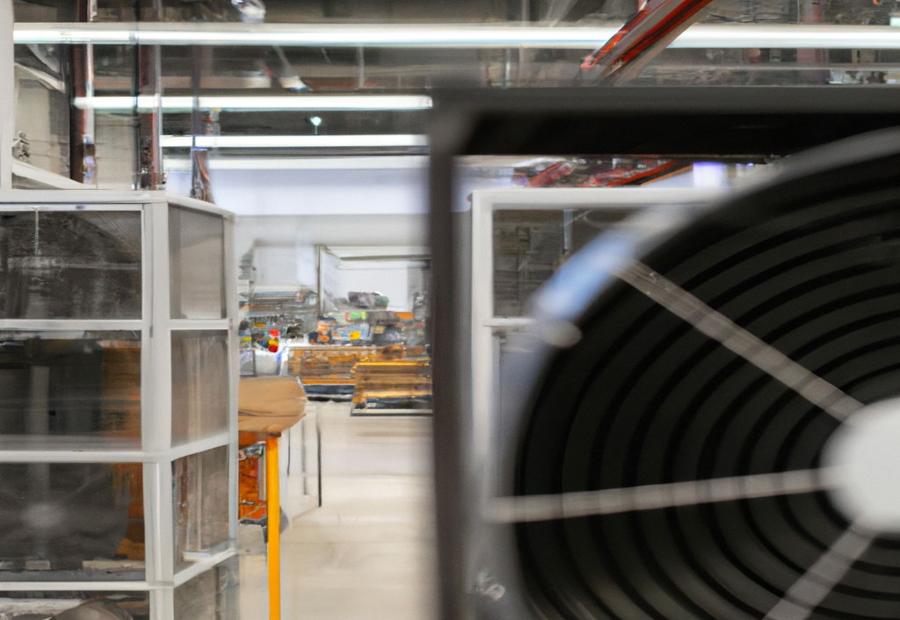


Photo Credits: Build-Wire.Com by Michael Thomas
Selecting the right HVAC systems and maintaining them regularly are crucial aspects of designing a climate-controlled warehouse. Learn how to choose the appropriate heating, ventilation, and air conditioning systems, and discover the importance of consistent maintenance and monitoring for optimal performance.
Selecting the appropriate heating, ventilation, and air conditioning systems
For a climate-controlled warehouse, it’s important to select the right HVAC systems. Consider capacity, efficiency, zoning, and air distribution. This will help provide optimal conditions, preserving product quality and preventing damage. Don’t forget to maintain and monitor these systems, too! Regular maintenance and real-time data tracking can identify any issues early. In the end, selecting the right HVAC systems and monitoring them carefully will create an efficient, climate-controlled environment. So don’t miss out – and remember: a cool warehouse is a happy warehouse!
Importance of regular maintenance and monitoring of HVAC systems
Regular maintenance and monitoring of HVAC systems are pivotal in climate-controlled warehousing. To ensure optimal temperature and humidity, these systems, which provide heating, ventilation, and air conditioning, must be maintained. Inspections and tune-ups are needed to check for wear and tear, clean filters and coils, lubricate moving parts, and calibrate thermostats. Additionally, monitoring performance is essential to detect deviations from set temperature and humidity levels.
Neglecting maintenance and monitoring can lead to various consequences. Performance decreases, energy consumption rises, and operational costs increase. In addition, inconsistent temperature and humidity can affect stored goods’ quality. Malfunctioning HVAC systems can also make working conditions uncomfortable and damage sensitive products.
To keep things in order, a preventive maintenance schedule should be established. Qualified technicians should conduct routine inspections and filter replacements should be included to prevent airflow restriction due to clogged filters. Remote monitoring technologies can also be used to track temperature, humidity levels, and other critical parameters. Alerts are triggered for prompt investigation and necessary action if any parameters deviate from the set ones.
Ultimately, regular maintenance and monitoring of HVAC systems in climate-controlled warehouses is a must for protecting warehouse treasures.
Temperature and Humidity Control
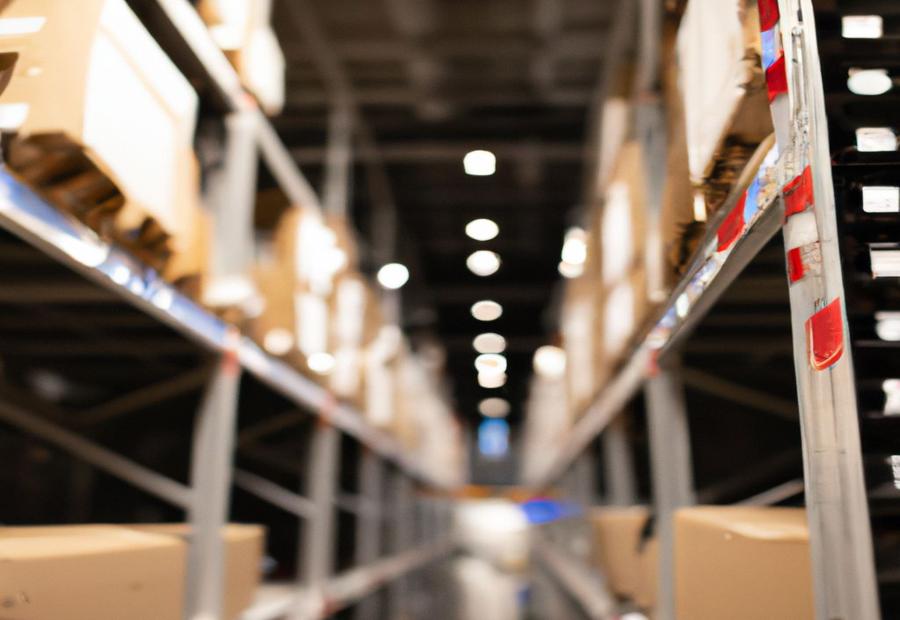


Photo Credits: Build-Wire.Com by Philip Robinson
Maintaining the right temperature and humidity levels is crucial in designing a climate-controlled warehouse. In this section, we’ll explore the key aspects of temperature and humidity control. Discover how to set and maintain optimal temperature levels, as well as effective strategies for managing humidity to prevent issues like condensation and moisture damage. With these tips and tricks, you can ensure a well-regulated environment for the optimal storage of goods.
Setting and maintaining optimal temperature levels
Climate-controlled warehouses require optimal temperature levels to preserve product quality and reduce waste. Real-time monitoring systems with sensors measure temperatures and alert of any deviations. To maintain these levels, HVAC systems with accurate setpoint control and programmable schedules should be used. Uniform airflow helps prevent hot spots or cold spots from affecting product quality. Moreover, regular maintenance & calibration of temperature control equipment is essential for reliable performance & accuracy. Humidity should also be monitored to avoid a soggy storage situation. By following these steps, warehouses can effectively set and maintain temperatures.
Managing humidity levels to prevent condensation and moisture-related issues
Controlling humidity is vital in climate-controlled warehouses. It prevents condensation, mold growth, rust formation, and product spoilage. Ways to control humidity include dehumidification systems, insulation, sealing, and monitoring moisture levels. These create a stable environment that safeguards goods.
In addition to temperature control, managing humidity levels is essential for stored products. Excess moisture leads to condensation, which can damage products and harm personnel. To prevent this, insulation and sealing is necessary to create an airtight environment and prevent outside moisture from entering.
Reliable HVAC systems should be installed for cooling and dehumidifying. Regular maintenance and monitoring are essential for humidity control. This provides a consistent environment that minimizes moisture-related risks.
Efficient storage and racking systems also play a role in managing humidity. Storage solutions designed for these environments optimize airflow, preventing moisture buildup. Shelves should be spaced to allow air circulation.
Overall, humidity must be managed to prevent condensation in climate-controlled warehouses. This includes choosing the right location, insulation & sealing, HVAC systems, storage solutions, and monitoring & maintenance. This creates a controlled environment that preserves and protects goods.
Storage and Racking Systems



Photo Credits: Build-Wire.Com by William Gonzalez
Storage and racking systems play a crucial role in designing a climate-controlled warehouse. In this section, we will explore how to choose suitable storage solutions for climate-controlled warehouses and maximize storage capacity while ensuring proper airflow and circulation. By implementing the right storage and racking systems, warehouses can effectively manage inventory, optimize space utilization, and maintain ideal climate conditions for stored goods.
Choosing suitable storage solutions for climate-controlled warehouses
Choosing the right storage solutions for a climate-controlled warehouse is vital. It helps maintain stable temperature and humidity, preserving product quality. Design considerations include factors like location, insulation, HVAC, energy efficiency, security, monitoring, staff training, and safety protocols.
When selecting storage solutions, a few key aspects must be taken into account. These include:
- Type of shelving/racking that can maximize capacity and airflow
- Preventing blockages that hinder distribution of conditioned air
- Ventilating between shelving units for even temperature
- Choosing materials like metal/plastic, which are durable and resist moisture-related issues
- Adjustable shelves/racks to accommodate product sizes and packages
- Dividers/partitions for organization and extra protection
Overall, selecting appropriate storage solutions is critical for successful climate control. By considering factors like airflow, material, flexibility, and organization, businesses can maximize their storage operations and product quality.
Storage solutions that enable capacity and airflow are essential for a cool, organized warehouse.
Maximizing storage capacity while ensuring proper airflow and circulation
- Utilize suitable racking systems like pallet racks or shelving with open designs, allowing airflow between items.
- Space out rows of racks and shelves to encourage unrestricted airflow.
- Group goods with similar temperature and humidity needs to optimize airflow.
- Use vertical storage methods, like mezzanines or high-density racking systems, to take advantage of vertical space.
- Monitor and adjust the placement of goods and racking systems regularly.
Other factors such as insulation, HVAC systems, energy efficiency, security, staff training, and safety protocols also contribute to creating a well-designed climate-controlled warehouse. Go ahead and make Mother Nature proud with energy-efficient strategies!
Energy Efficiency and Sustainability Measures
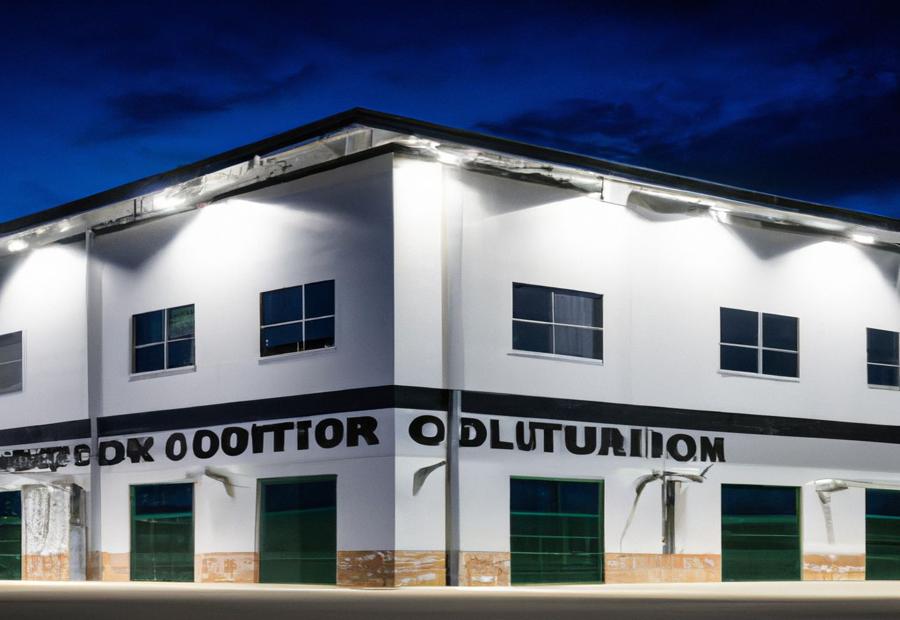


Photo Credits: Build-Wire.Com by Mason Nguyen
In the realm of designing a climate-controlled warehouse, the focus on energy efficiency and sustainability measures is paramount. This section will uncover the strategies employed to achieve these goals, such as implementing energy-efficient lighting systems, utilizing smart technology and automation for energy optimization, and incorporating waste management and recycling practices. By delving into these sub-sections, we can understand how warehouses are making significant strides in reducing their environmental impact and optimizing energy consumption.
Implementing energy-efficient lighting systems
- Step 1: Analyze Lighting Infrastructure
Evaluate the existing lighting system to check its efficiency and find areas to improve. Do an energy audit to study the lighting usage, bulbs used, and potential places for optimization.
- Step 2: Switch to LED Technology
Replace conventional incandescent or fluorescent bulbs with LED lights. These are energy-efficient, have a longer lifespan, and emit less heat. Perfect for climate-controlled environments.
- Step 3: Install Motion Sensors and Dimmers
Put in motion sensors and dimming systems to make sure lights are only activated when needed, and adjusted based on room occupancy. This lowers energy consumption during low-traffic periods.
- Step 4: Use Natural Light Sources
Maximize natural light through skylights or windows by positioning storage racks and workstations strategically. This decreases reliance on artificial lighting during daylight hours.
By applying these strategies, climate-controlled warehouses can save energy and keep proper illumination levels. Employing high-performance reflective materials for walls and ceilings can further improve natural light distribution and lighting efficiency.
Climate-controlled warehouses that have implemented energy-efficient lighting systems have seen substantial energy savings and cost reductions. For instance, a leading warehousing company cut their electricity bills by 30% after replacing their facility’s lighting with LED technology. The use of motion sensors also lowered unnecessary usage during low-traffic periods, leading to more cost savings. These results show the advantages of energy-efficient lighting systems in climate-controlled warehouses.
Utilizing smart technology and automation for energy optimization
Leverage smart technology and automated processes to optimize energy usage in warehouses! This includes:
- Adjusting HVAC systems based on real-time analysis to cut energy consumption.
- Integrating intelligent lighting that adjusts automatically, to minimize wastage.
- Using automated equipment for streamlined ops, which reduces labor-related energy consumption.
- Installing smart building management systems to monitor and analyze energy patterns for proactive measure-taking.
- Incorporating renewable energy sources such as solar or wind turbines, to reduce reliance on traditional sources.
These cutting-edge technologies monitor energy consumption, identify areas of improvement, and enable necessary adjustments for continued optimization. This helps to reduce costs and carbon footprint, making waste management truly thrilling.
Waste management and recycling practices in climate-controlled warehouses
Climate-controlled warehouses must implement effective waste management and recycling practices. This helps reduce their environmental impact and aids the circular economy. It is key to correctly sort and recycle commonly used materials like cardboard boxes and plastic packaging.
Waste reduction strategies should also be considered. These include minimizing packaging waste, optimizing product ordering processes to avoid excess inventory, and finding creative ways to repurpose or reuse materials. This supports sustainability goals and aids warehouse efficiency.
Warehouses must assess and update their waste management strategies regularly. Comprehensive waste management and recycling practices help minimize their environmental impact and contribute to a sustainable future. Staying aligned with sustainability goals and regulations is essential for creating a positive environmental impact.
Security and Monitoring Systems



Photo Credits: Build-Wire.Com by Jerry Walker
To ensure the safety of goods stored in climate-controlled warehouses, implementing robust security and monitoring systems is crucial. In this section, we will explore the significance of security measures specifically designed for such warehouses. Additionally, we will discuss the utilization of advanced monitoring systems that enable tracking of essential parameters like temperature and humidity. Discover how these systems contribute to maintaining optimal conditions and safeguarding valuable inventory.
Importance of security measures for climate-controlled warehouses
Security is key in climate-controlled warehouses. These warehouses are designed to maintain temperature and humidity to protect stored items. They are vulnerable to theft, access, and vandalism. Any breach can cause financial losses and damage the warehouse’s reputation.
Robust security measures like surveillance cameras, access controls, and alarms are needed to deter intruders and monitor the facility. Physical barriers like fences and gates also help by regulating access. Security assessments and audits identify vulnerabilities and create risk-mitigation strategies.
Internal security is also important in climate-controlled warehouses. Employee activities must be monitored and protocols followed. Access to sensitive areas should be limited to authorized personnel.
A 2017 case highlights the importance of security measures in climate-controlled warehouses. A group of individuals gained unauthorized access to a storage facility, stealing or compromising expensive medications. This incident showed the need for stringent security protocols and raised awareness of security in climate-controlled environments.
Monitoring systems to track temperature, humidity, and other critical parameters
Monitoring systems are the key to tracking temperature, humidity, and other parameters for climate-controlled warehouses. They help operators maintain perfect conditions, ensuring goods’ quality and warding off damage.
Real-time Tracking: Data is monitored in real-time, allowing operators to spot any deviations from desired levels and take immediate action.
Alerts & Notifications: Systems are equipped with alert mechanisms to notify operators in case of significant changes. This helps them take prompt corrective measures.
Data Logging & Analysis: Systems also log data to help operators track trends over time. This can be used for identifying patterns, adjusting systems, and improving operations.
HVAC Integration: Monitors are often connected to HVAC systems to automate temperature and humidity levels, keeping them under constant control.
Remote Access & Control: Advances in tech mean operators can access monitors remotely from phones or computers. This offers flexibility in managing climate conditions without being on-site.
More features include customizable reporting, alarm/security system integration for safety, and compatibility with smart tech for automation.
To make the most of monitoring systems, warehouse operators should:
- Regularly review data to identify issues or trends that need attention.
- Set up alerts at appropriate thresholds for timely notifications of any fluctuations.
- Periodically maintain the monitors for accuracy and reliability.
- Integrate monitors with other management software for seamless data analysis and reporting.
- Train staff on proper use of monitors and how to interpret the data.
By following these steps, warehouse operators can ensure optimal temperature, humidity, and environment in climate-controlled warehouses.
Staff Training and Safety Protocols



Photo Credits: Build-Wire.Com by Andrew Campbell
When it comes to designing a climate-controlled warehouse, staff training and safety protocols play a crucial role. In this section, we will discuss the importance of training employees on handling climate-controlled environments and delve into the safety procedures for emergency situations and equipment malfunctions. It is vital to ensure that all staff members are well-prepared and knowledgeable in order to maintain a smooth and secure operation within the warehouse.
Training employees on handling climate-controlled environments
Employees need training on how to handle climate-controlled environments. Here’s a 6-step guide:
- Show employees why temperature and humidity control matter in warehousing. Explain the risks that come with not maintaining optimal conditions.
- Teach them design aspects, like choosing the right location, insulation, HVAC systems, storage solutions, energy efficiency measures, security systems, and staff safety protocols.
- Educate them on HVAC systems. Focus on selecting the right heating, ventilation, and air conditioning equipment. Also, emphasize the importance of regular maintenance and monitoring.
- Train them on setting and maintaining temperature levels. Explain methods of managing humidity, like preventing condensation and moisture-related issues.
- Give instructions on suitable storage and racking systems for climate-controlled environments. Highlight maximizing storage capacity while ensuring proper airflow and circulation.
- Show them energy efficiency measures in climate-controlled warehouses. This includes energy-efficient lighting systems, smart technology for energy optimization, and implementing waste management and recycling practices.
It’s important to keep employees updated. Encourage them to communicate any concerns or observations about temperature and humidity.
A study by Deloitte Access Economics (2018) found that effective training programs can reduce warehouse energy consumption by up to 20%.
Be prepared for emergencies and equipment malfunctions. They can happen when you least expect it.
Safety procedures for emergency situations and equipment malfunctions
It’s vital to review, update, and communicate safety procedures for emergencies and equipment malfunctions to all staff members. This helps ensure everyone knows their roles and responsibilities in an emergency. Clear signage in the facility can give employees instructions on how to respond during an emergency.
Also, warehouses should plan for power outages, natural disasters, and other unexpected events. These plans should include backup power sources, emergency lighting, communication devices, and food/water storage for extended disruptions.
Safety measures are essential to reduce risks of emergencies and equipment malfunctions in climate-controlled warehouses. This keeps personnel safe and helps prevent financial losses due to extended interruptions.
For example, a climate-controlled warehouse suffered a major power outage due to severe weather conditions. Thanks to their evacuation plan, all personnel exited the building quickly. The emergency shutdown procedures were followed and emergency contact information was readily available, so the management could quickly contact the right authorities. By adhering to safety protocols and acting swiftly, the warehouse resumed operations smoothly after power was restored. This shows the importance of safety procedures in protecting personnel and physical assets in climate-controlled warehouses.
Conclusion



Photo Credits: Build-Wire.Com by Ronald Martinez
Designing a climate-controlled warehouse needs special attention. There are tips to follow, such as proper insulation, an effective HVAC system, temperature monitoring and layout planning. All these strategies help to ensure the quality of stored goods, while using minimal energy and keeping temperatures and humidity levels ideal.
Insulation is key to minimizing heat transfer and keeping the warehouse temperature stable. Quality materials for walls, floors and ceilings should be used to limit heat exchange with the outside, leading to better energy efficiency and temperature control.
Also necessary is a well-designed HVAC system. It should provide both heating and cooling, and have the capacity for the specific needs of stored goods. Energy efficiency is important, so the warehouse can reduce energy consumption and keep the climate consistent.
Temperature monitoring is also crucial. Sensors throughout the facility track temperature and humidity, so any deviations from the desired conditions can be identified and addressed. Automated alerts and remote monitoring make this even more efficient.
Layout planning is essential to maximize the effectiveness of a climate-controlled warehouse. Goods should move quickly, with minimal distance travelled. Also, HVAC vents, insulation barriers and temperature monitoring equipment should be placed strategically.
In summary, designing a climate-controlled warehouse needs careful consideration and implementation of various factors. This ensures the preservation and quality of goods, while using minimal energy and maintaining optimal temperature and humidity levels.
Additional Resources and References
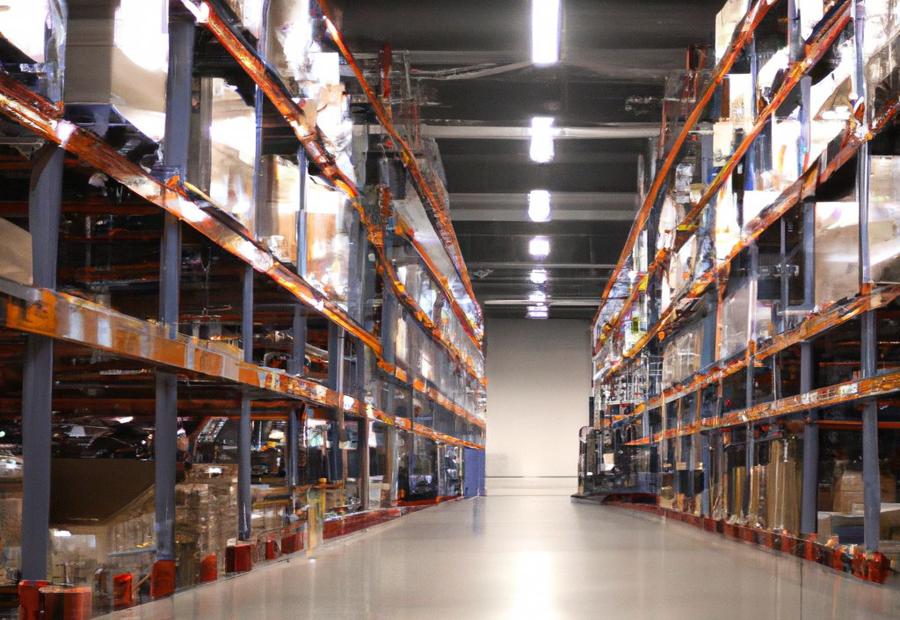


Photo Credits: Build-Wire.Com by Douglas Ramirez
Designing climate-controlled warehouses need extra resources and references. These offer vital information and tips to make the design better. Using these, designers can improve the warehouse’s effectiveness.
- Energy Efficiency: Resources and references show the latest technologies and best practices to save energy and manage energy systems better.
- Temperature and Humidity Control: Resources and references tell you how to choose and set up climate control systems to maintain proper storage conditions.
- Optimal Space Utilization: Resources and references help designers get efficient layouts and storage systems. This helps to use space well.
- Smart Warehouse Solutions: Resources and references provide information on using automation, robotics, and data analytics to make warehouse operations more productive.
- Sustainability: Resources and references provide guidance on sustainable design, renewable energy, and green building practices.
Some Facts About Designing a Climate-Controlled Warehouse: Tips and Tricks:
- ✅ A climate-controlled warehouse aims to maintain specific temperatures and humidity levels to preserve the quality of stored goods and materials. (Source: Team Research)
- ✅ Energy efficiency is a key factor in designing a climate-controlled warehouse to minimize waste and energy consumption. (Source: Team Research)
- ✅ Implementing automated storage systems in a climate-controlled warehouse can improve efficiency and reduce human error. (Source: Team Research)
- ✅ Proper insulation and ventilation systems are essential in climate-controlled warehouses to maintain the desired temperature and prevent condensation. (Source: Team Research)
- ✅ The layout design of a climate-controlled warehouse should prioritize airflow, accessibility, and organization to optimize storage and retrieval processes. (Source: Team Research)
FAQs about Designing A Climate-Controlled Warehouse: Tips And Tricks
What are the benefits of designing a climate-controlled warehouse?
Designing a climate-controlled warehouse offers several benefits, including:
- Minimizing temperature fluctuations to protect sensitive goods such as fresh produce, meat and seafood, dental materials, blood samples, nutritional supplements, historical documents, and film canisters.
- Ensuring the integrity and quality of temperature-sensitive products by preventing chemical and physical changes caused by temperature variations.
- Extending shelf life and preserving the nutritional value of perishable nutrient products.
- Reducing the risk of biological decay and spoilage.
- Creating a well-maintained environment that meets the specific temperature requirements of different goods.
How can a modular curtain wall system help in designing a climate-controlled warehouse?
A modular curtain wall system is a beneficial tool for designing a climate-controlled warehouse. It offers:
- Flexibility in creating separate temperature zones within the warehouse to accommodate different temperature requirements.
- Effective insulation to minimize temperature fluctuations and maintain a stable environment.
- Easy installation and customization options to suit specific warehouse layouts and requirements.
What role does warehouse management software play in designing a climate-controlled warehouse?
Warehouse management software plays a crucial role in designing a climate-controlled warehouse by:
- Providing real-time temperature monitoring and control to ensure adherence to specific temperature ranges.
- Optimizing inventory accessibility and tracking to minimize temperature exposure during stock replenishment and retrieval.
- Streamlining production flow by integrating temperature control with other warehouse management tools.
- Enhancing labor utilization and efficiency by automating temperature-related tasks and alerting staff to temperature deviations.
- Facilitating data analysis and reporting to identify areas for improvement and maintain optimal temperature conditions.
What are the key considerations for managing cold storage in a warehouse?
To manage cold storage effectively in a warehouse, consider the following:
- Proper insulation, HVAC cooling systems, and modular curtain walls to maintain required temperature ranges.
- Investment in energy-efficient lighting, solar panels, and other sustainable climate control measures to minimize energy consumption and curb carbon footprint.
- Implementing a green logistics framework to reduce traffic and pollution by locating distribution centers near customers.
- Using electric lift trucks and other automatic handling equipment to reduce carbon emissions and ensure safe operation in cold storage areas.
- Rational use of supplies and minimizing waste through recycling, reusing, and efficient layout design.
What are the challenges and best practices in designing a warehouse layout for climate-controlled storage?
The challenges in designing a warehouse layout for climate-controlled storage include:
- Ensuring safety precautions are in place to protect humans involved in handling sensitive goods.
- Planning for future expansion and changes in inventory and technology.
- Avoiding underutilization or overutilization of warehouse space.
The best practices for designing a warehouse layout for climate-controlled storage involve:
- Defining unique objectives based on the specific requirements of temperature-sensitive products.
- Staying organized with labeling and using warehouse management software for efficient inventory organization.
- Training warehouse staff on proper handling techniques and awareness of temperature control measures.
How does cold storage warehousing contribute to environmental sustainability?
Cold storage warehousing contributes to environmental sustainability through various measures, such as:
- Using energy-efficient lighting, insulation, and temperature control systems to minimize energy consumption.
- Implementing green logistics practices, such as reducing transportation needs by locating warehouses closer to customers.
- Optimizing warehouse layouts and compact storage systems to maximize space utilization and reduce the environmental impact per pallet stored.
- Implementing recycling and waste reduction programs to minimize the environmental impact of logistics activities.
- Investing in preventive maintenance, technology like AI and IoT devices, and efficient layouts to improve safety, minimize breakdowns, and reduce resource usage.
